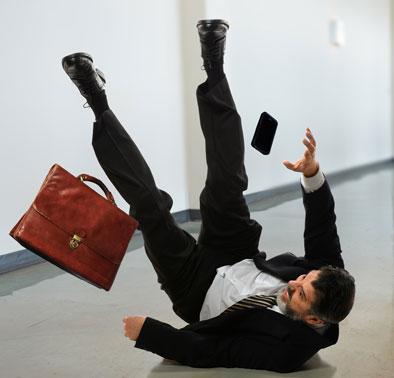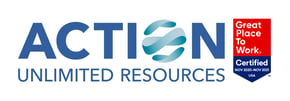
Slip-and-fall accidents are a major concern. In fact, according to the Global Floor Safety Network, over 540,000 Slip-Fall injuries requiring hospital care occur in North America each year, and over 20,000 result in fatalities. In addition, worker’s compensation claims exceed $1.8 Billion per year related to this problem.
Wise commercial enterprises take out ample insurance policies to protect against costs related to injuries suffered by employees, visitors, and customers. These liability policies can present a false sense of security for a business, because filing even one claim is likely to result in an increased insurance premium for years to come. Therefore, cleaning professionals must take added measures to ensure that the floors they maintain are safe and slip-resistant.
Sometimes it is difficult to figure out exactly why a floor may be slippery. This is when you will need to break out your “detective” skills. One of the most common reasons a floor may be slippery is that it simply has not been cleaned properly. Many slip-and-fall hazards can be eliminated by properly cleaning the floor with the right tools, chemicals, and equipment.
8 Common Causes
- Incorrect concentration (too much or too little)
- Wrong or inferior chemicals
- Dirty mops, pads, or tools (use clean/new)
- Contaminated bucket (clean it or line it with a trash liner)
- Oily or over-treated dust mop (avoid treatment-use microfiber)
- Overspray from chemicals used to clean or polish desks, equipment, and vertical surfaces
- Residue tracked in from ice melting products (rinse with a neutralizer)
- Over-loaded or incorrectly sized or styled entrance matting (review with a professional to achieve best results)
In some cases, a slippery floor may need to be flood-rinsed or machine-scrubbed with an automatic scrubber. Often, this will remove any soiling or film on the floor that may cause a slippery surface. Worst-case scenarios may require the floor to be stripped and refinished. This process will remove all the finish and/or sealer from the floor, in-turn eliminating all residue.
An Affordable Insurance Policy Against Costly Claims
Your organization won’t be able to guard against every possible injury to customers and employees that may occur on your property. Slippery floors lead to slip-and-fall injuries which pose a huge financial risk to your business; therefore, it makes sense for facility managers to search for ways to keep costs down through smart preventative measures that can protect workers, customers, and visitors from dangerous conditions. For more tips, follow our Ultimate Cleaning Guide below!



Enjoy this blog? Leave a comment or ask a question!